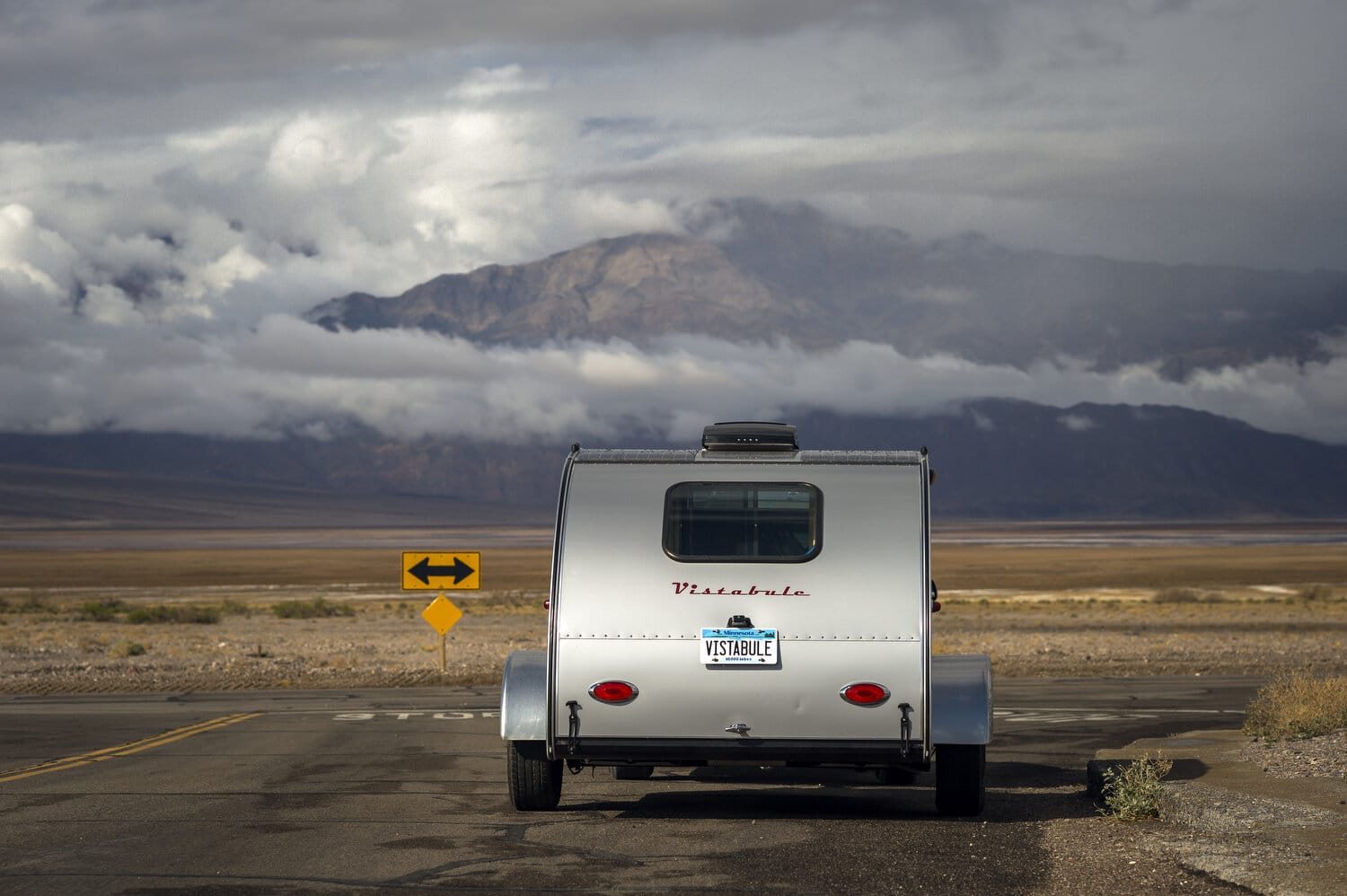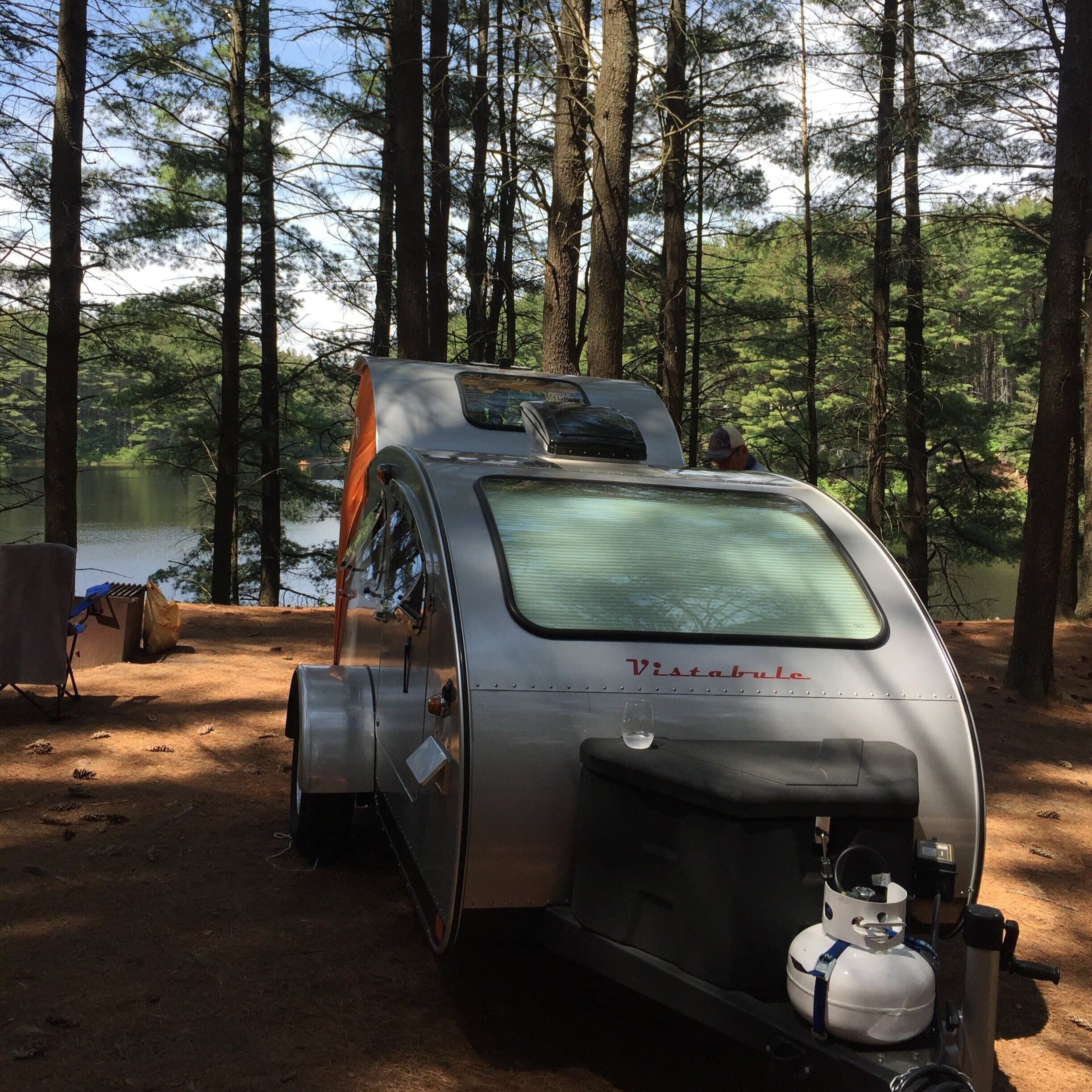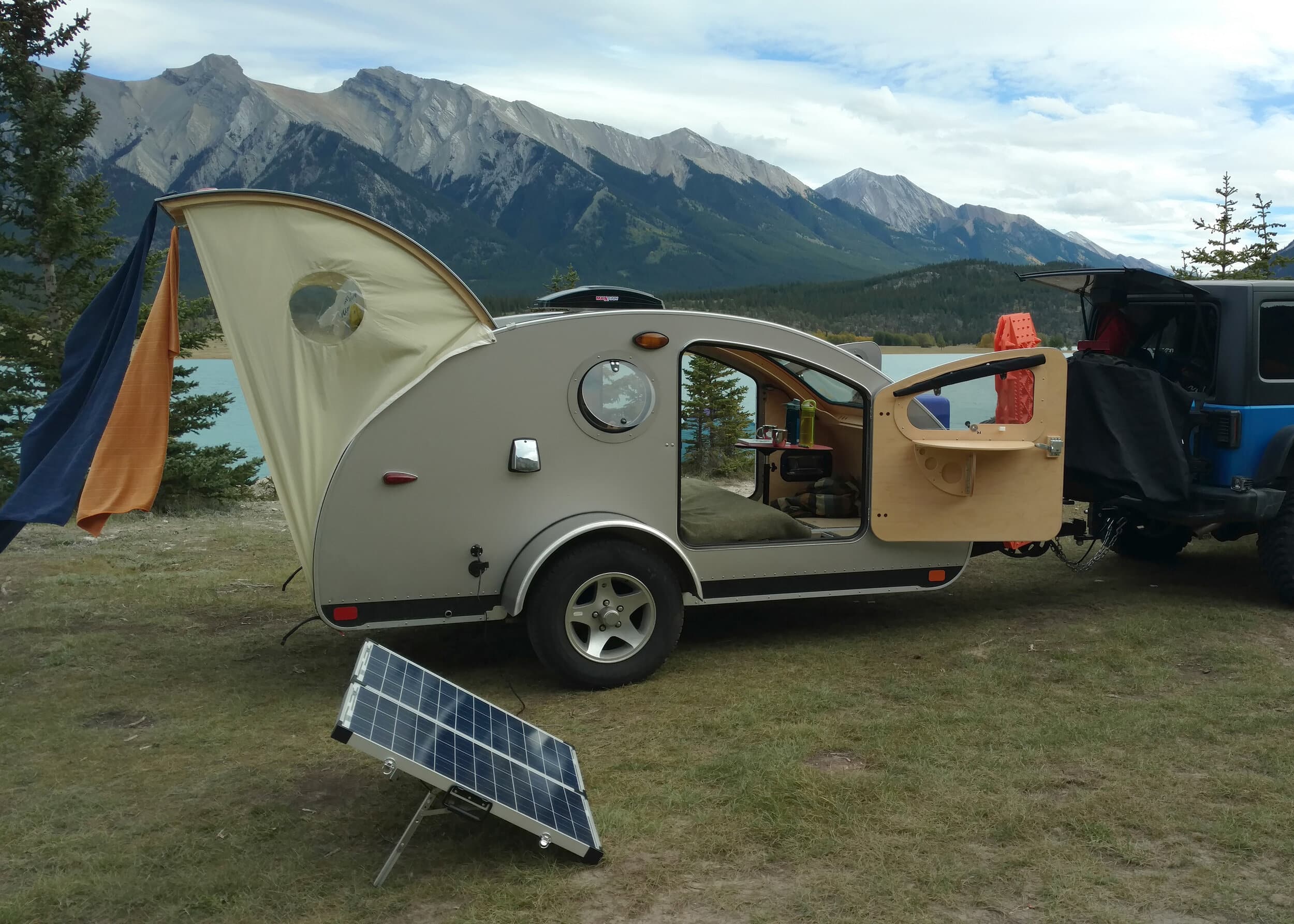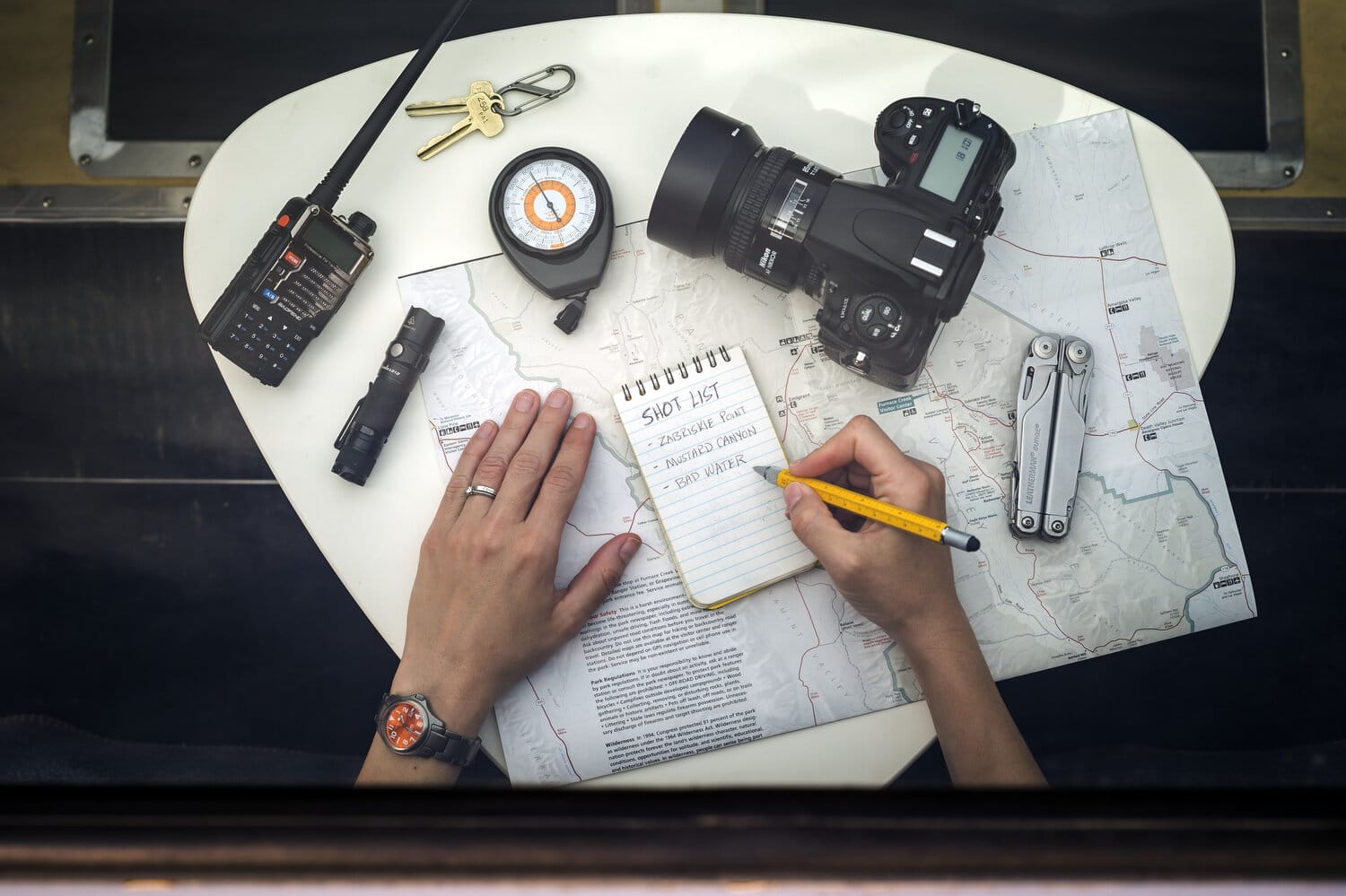Boondocking has never been more popular than it is today. Thanks to the freedom it provides RVers to essentially camp anywhere, from convenient truck stops off the highway to dispersed sites in the country’s most beautiful national parks, boondocking has become a great way to experience the uncharted.
There are a ton of ways to get started with boondocking — this guide is intended to help you discover how and where to camp for free if you’re trying to plan a boondocking adventure.
WHAT IS BOONDOCKING, ANYWAY?
Boondocking is a catch-all term used to describe free camping. Whether it’s in the wilderness of public lands or on someone’s private property, boondocking offers a way for people to enjoy nature without the added costs. In a world that’s become more and more hyper-connected, boondocking is a great way to get away from the hustle and bustle of life and revel in a peaceful escape—wherever that happens to be.
Is Boondocking Different than Dry Camping or Off-Grid Camping?
Boondocking is distinct from dry camping, though the two are closely related. Whereas boondocking specifically refers to free camping, dry camping refers to camping without hookups.

Boondocking offers a way for people to enjoy nature without the added costs.
WHY BOONDOCK?
Are you an avid or aspiring explorer? Boondocking allows adventurous campers to travel routes and reach destinations that wouldn’t be possible with more conventional camping and RVing. It also provides a useful layover option when you’re on long trips just need somewhere to sleep for a few hours – just pull over in a safe place – even a truck stop or empty parking lot works to a and get some shuteye. Not many other types of travel itineraries give you that type of freedom.
And boondocking doesn’t just open up your travel opportunities, it’s a great way to save money on campsite fees, hotel reservations and gas, among other things. With some planning and the right gear, you can make the entire experience more comfortable. External generators, solar panels, composting toilet, portable shower, back-up water tanks and propane heat and cooking equipment.

FREE CAMPSITES: BACKCOUNTRY, BLM LAND, PARKING LOTS, AND MORE
When preparing to boondock there are several free places to check out, from the backcountry to the big city. The first thing to do is to choose a spot(s) along your route, where overnight parking is allowed. Remember to avoid private land without permission, as you could risk your safety or attract law enforcement.
How to Find Boondocking Sites
If you’re confused on where to start, familiarize yourself with the following types of places that are popular in the boondocking community.
Here are some examples of common free places to camp:
BLM-Managed Land
The U.S. Department of the Interior’s Bureau of Land Management (BLM) oversees various campgrounds and remote sites around the country. BLM-managed land provides boondockers with plenty of campable land, from highly developed RV campgrounds to dispersed camping in remote areas, so there’s something for everyone. Campers can stay two continuous weeks for free, but all subsequent days must be at least 25 miles away from the previous location, although there are some exceptions to the rules in some areas.
Check out BLM’s website to find more information about boondocking on their land.
National Parks and Forests
Similar to BLM-managed land, but slightly different in that you can usually camp anywhere in a national forest as long as there is no signage saying not to. This land provides the perfect place to get lost in the amazing backcountry. That’s why many RVers choose destinations in or near a national park. State-owned parks and forests, as well as the U.S. Fish and Wildlife Service also provide boondocking sites in some locations.
Explore 650-million acres of the United States’ public land with the app, US Public Lands.
Private Property
While you shouldn’t just pull up on anyone’s land and camp, there is a very tight-knit community in the boondocking world offering private campsites. Take a look at Harvest Host, a company that provides a membership network of wineries, breweries and farms that provide free camping for RVs. Or, a similar company, Boondockers Welcome, provides another network of hosts opening up their property to guests staying in self-contained campers.
Truck and Rest Stops
Truck and rest stops are another option for boondockers, providing you with enough amenities to get you through at least a day or two. You will have a restroom nearby, likely food or at least vending machines, and you can hop right back on the road when you’re ready to move on. Always try to park in a well-lit area of the lot and near a camera, if possible, to keep yourself and vehicle secure.
Approved Parking Lots
A common place to set-up for a short stay is an empty parking lot at a hotel, grocery store or superstore like Wal-Mart, which actually does allow boondockers to stay in the stores’ lots for up to 24 hours. While this isn’t an ideal option for many campers, it can do in a pinch when you’re on a long leg of your journey. It also lets you save money that you’d otherwise have to spend on a hotel room. There’s even an app to assist finding available Walmart lots nearby. Hotels are another good option, although you may get kicked out if you’re taking up spaces for their customers.
TYPES OF BOONDOCKING
A common place to set-up for a short stay is an empty parking lot at a hotel, grocery store or superstore like Wal-Mart, which actually does allow boondockers to stay in the stores’ lots for up to 24 hours. While this isn’t an ideal option for many campers, it can do in a pinch when you’re on a long leg of your journey. It also lets you save money that you’d otherwise have to spend on a hotel room. There’s even an app to assist finding available Walmart lots nearby. Hotels are another good option, although you may get kicked out if you’re taking up spaces for their customers.
Developed Campsite: Perfect for Mid-Length Trips
To boondock or not to boondock; that is the question. Well, it may depend on the campground you choose. Some campgrounds do offer boondocking sites, or simply spaces for RVs that don’t include water, sewer and electrical hookups. Usually, these spots are not as expensive as normal RV sites, and you’ll still get to take advantage of the campground amenities like the toilets and water fountain. But, you’re still paying a campsite fee, so you may not be able to stay for as long as you want.
You’ll find these types of spaces at both private and public campgrounds, as well as state and national parks. It’s often a comfortable option, as you have the things you need nearby, while also letting you get a mild dose of nature.
Off-Grid Camping: Extended Stays in the Wilderness
For those that really want to experience the wilderness, off-grid camping is a great option. This is often considered the purest, most rugged form of camping among RVers. Off-grid camping involves finding a remote site, off the beaten path, and setting up shop. Whether it’s mountains in Alaska, the stars in the Mojave desert or sunsets on the beaches of Florida, you’ll experience some of the most picturesque settings in complete privacy. Especially compared to any other way of camping.
There and Back: Quick Trips
With quick trips, you don’t have to make it complicated, particularly if you have an independent power generator, food and back-up water. This is the easiest form of boondocking and is one of the best parts of traveling in an RV. However, you won’t have complete privacy and safety is always a concern in strange places – so park in a well-lit area with cameras.

For those that really want to experience the wilderness, off-grid camping is a great option. This is often considered the purest, most rugged form of camping among RVers.
BEST BOONDOCKING TRAVEL TRAILERS
There are a number of trailer features that can make or break a good ol’ fashion boondocking trip.
Features of a Good Boondocking Camper
- Blend of Luxury and Practicality: The best boondocking travel trailers contain the amenities you need, without adding any heavy extras that you don’t. You don’t want to be lugging around a lot of flashy accessories, like 40’’ TVs, but you probably do want a portable water tank, and a bed to sleep on.
- Small Size: A good boondocking camper needs to be small and maneuverable. Need to crash in a Walmart parking lot? No biggie. Want to twist your way up a mountain pass to a remote campsite? You can do that too.
- Vehicle Accessibility: It’s likely that you’ll need to make a run for more supplies at some point. And when that happens, you’ll want the option to easily unhook your towing vehicle or to store one in an easily accessible toy hauler garage.
- Solar Capabilities: If you’re out in the boonies for a number of days or even weeks, you won’t be able to hook up to a city power supply. Get a boondocking trailer that’s prewired for solar power, like Vistabule.
- Large Water Tanks: If you’re going remote, you’ll need to bring water, or have a way to filter it. Find a trailer that has a water system that lets you carry some extra potable water.
- Strong Frames and Raised Axles: If you’re heading off-road, you’ll want a trailer that can keep up with you. A raised axle will help your trailer coast over rocks and debris without bottoming out. The strong frame will keep your home away from home functioning for years to come.
Our Favorite Boondocking Travel Trailers
- Vistabule Teardrop Trailers: Of course, we’re a bit biased. But we have a number of customers that love taking their Vistabule off the grid. With our small size, customizable features, and efficient comfort, a Vistabule is a boondocking dream.
- Airstream Basecamp X: This trailer is one of Airstream’s cheapest options, but has some pretty sweet off-roading wheels. If you’re going to be on rocky terrain, this might be an interesting option to look into.
- 2020 Opus Air 4 Sleeper: This is a fun option if you’re boondocking with a bigger crew. This Opus model can sleep up to 6, and like a Vistabule, has an outdoor kitchen.
- inTech RV Flyer: This is the best small option if you’re looking for a toy hauler. If you want to bring your motorcycle or 4-wheeler along out into the wilderness, inTech might be for you.
- Volkswagen California Camper Van: Volkswagen camper vans are a classic. Yes, with a van you won’t be able to unhook and drive sans trailer, but it’s worth considering, especially if you’re looking for an RV-style vehicle. A camper van always you to keep things compact.
Read more about some of our customers’ adventures in the remote Mojave desert, here.
BOONDOCKING TIPS TO MAKE THE MOST OF YOUR TRIP
If you’re almost ready to hit the road, remember these tips to ensure that your boondocking experience is a positive one.
Tip #1: Take Advantage of Technology
Although boondocking involves getting back to a more basic way of life, technology has actually amplified the spread of RV camping. No more fussing with a map and atlas (although you should always have these analog backups handy); smartphones and apps are the new boondocking essentials. So, even if you’re hesitant to stay semi-on-the-grid, keep some form of computer or smartphone and a boondocking app to find campsites, interact with others in the community and learn important information. Look to the options below:
- Boondocking for iOS: View more than 800 boondocking locations and free camping sites in the U.S.
- FreeRoam for Android: Find the best campsites to stay at throughout the country and chat with fellow boondockers, among other features.
Beyond these and others listed in this article, there are a ton of other apps that will help improve your boondocking experience, including a trusty GPS app that gets you from point A to B, a game app that helps fight boredom and a fuel-price app to save on gas while traveling.
Tip #2: Have Emergency Communication
For those off-grid campers, a satellite phone or some other type of always-connected device is particularly important. Not only will you give your friends and family peace of mind as you travel, you can call for help should an accident happen. It’s always best to be prepared for emergency situations.
Tip #3: Do Regular Maintenance on Your RV or Trailer
This goes without saying but RVs and travel trailers need regular maintenance, and not just once a year before they go into storage. Especially if you’re camping on extended trips or in adverse weather. Take a look at the list below to ensure that yours stays in tip-top condition if you’re parked for long periods of time:
- Manage moisture: Moisture is one of the biggest issues with keeping a nice, clean RV. Always check over water lines and tanks for leaks and fix/replace any that you find. Remember to close windows and doors when it’s raining and always inspect the first signs of water damage.
- Inflate tires: Sitting for a long time will cause the tires to slowly deflate. Make sure to keep them at the optimal PSI so you don’t have to worry about getting a flat when you venture on.
- Clean water systems: This is something you really don’t want to pass over, as it could send a lot of messy stuff back up your pipes. Inspect pumps, valves and hoses for any leaks, then sanitize the fresh water tank and hose.
- Flush waste tanks: While you may not be able to do this as much as you want, regularly cleaning tanks helps to keep bacteria and funky smells at bay. Back flush your waste tanks, especially if you’re parked for long periods causing build-up. Ensure dump hoses and fittings do not become worn or leaks could occur. When boondocking, it’s generally recommended to empty your grey and black tanks whenever you’re near an appropriate place to dump.
- Check the propane tank: Use a mixture of soap and water to detect for leaks, as these can come loose while driving. Inspect the propane tank for corrosion or damage and replace if you find anything.
- Conduct general cleaning and fixes: Regularly cleaning and fixing up things can have a great effect on how long things last and the condition they stay in. Is there a loose kitchen cabinet knob? Screw it tight so it doesn’t rip out and damage the panel. Have carpet? Run a vacuum or floor sweeper every once and a while and always clean up liquid spills. Exterior paint jobs can benefit from regular washing and protective waxing, as well.
Tip #4: Save Battery
Use a generator to extend your trip, but try to limit their usage to battery charging so you don’t bug anyone in the near vicinity. Other ways to save battery include turning AC or heat off at night and opening a window or adding a blanket, which also helps with propane conservation. Do not use lights if they’re not essential and keep use of other electrical items to a minimum.
Solar panels are another option that can help with power management. By capturing sunlight and converting it into electricity, solar panels help power lights, outlets and anything else. RV solar panels are smaller than residential ones, and specially installed on the roof of your camper. They even make smaller portable solar panels that can be set up and taken down in a few minutes. Vistabule teardrop trailers come with the option of built-in rooftop solar panels.
Tip #5: Always Be Conservative With Water
Water is one of the things that you’ll most definitely need on any trip, and it seems like there’s never enough. If you have the space, carry extra water tanks to drink or use in the kitchen. Conserve water by taking short showers or turning the water off while you soap up and then back on to wash off. Instead of washable dishes, get disposable plates, cups and silverware. If you’re open to going to the bathroom in nature, that will also help extend the life of your water.
Tip #6: Practice the Law of “Leave No Trace”
As is always good practice when camping, follow the same rules that backcountry campers do – leave no trace. You’ll see signs posted in the U.S. National Parks, BLM-managed land as well as other public areas. Essentially, it means that you take only memories and leave only footprints. Always pack out your trash and leave campsites as you left them, and do your part to camp responsibly to avoid starting forest fires, damaging the environment and leaving a mess.
Check out this website to learn more about the Leave No Trace style of boondocking.
Tip #7: Utilize the Boondocking and RV Communities
As we’ve said before, the boondocking community is a tight-knit one, at least online. We’ve already mentioned a few great sites that help RVers find land to camp on: Harvest Host and Boondockers Welcome. Besides those, there are plenty of boondocking forums, like iRV2 and RV.net which are active, as well as plenty of YouTube channels like Campendum, a group devoted to mastering the boondocking lifestyle.

Although boondocking involves getting back to a more basic way of life, technology has actually amplified the spread of RV camping.
READY TO GET STARTED WITH BOONDOCKING?
If you’re ready to get started with boondocking, there’s no better time to hit the road than now. From parking lots in the middle of urban centers you’re visiting to the remote wilderness of North America, you’ll find boondockers in every corner of the country. This unique and amazing way of camping with few restrictions is what keeps RV enthusiasts coming back for more.
If you’re searching for the perfect boondocking vehicle to get closer to nature, teardrop trailers are a great option. Because of their size and mobility, they are great for off-grid camping in spaces where a larger motorhome or camper can’t fit. They’re also equippable with modern comforts like air conditioning, heat, galley kitchen, electricity and more, so you never have to get too far from the comforts of home.
If you want to gain the freedom to travel on new adventures, get in touch with Vistabule today. We build custom, carefully-crafted teardrop campers that are ready for any type of trip. Check out our interactive build form, download the pricing worksheet below or get in touch with our team today to learn more.
Related Posts

Vistabule Vs Daytripper: Which Trailer is Right for Me?
In 2024, Vistabule began the soft rollout of its newest trailer model. For those of you that know anything about Bert Taylor, creator and founder of Vistabule Teardrop Trailers, you know that he has an obsessive love for some old band from the UK…The Bug Boys, er, The Beatles.

